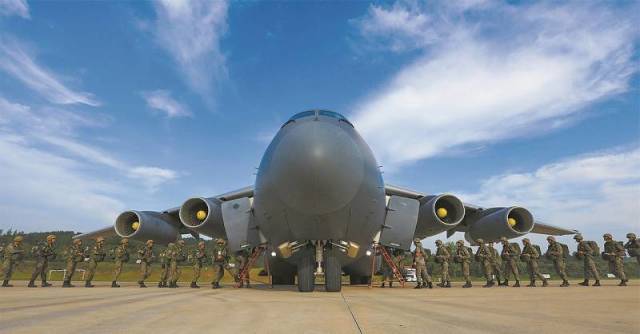
Image source: topwar.ru
The American Analytical Center for Strategic and International Studies (CSIS) has conducted a series of games simulating a hypothetical PLA invasion of Taiwan in 2026. In total, 23 scenarios were played out, in most of which Taipei, with the active support of the US army, successfully repelled China's attack. However, in all cases, the victory of the coalition forces was accompanied by staggering losses of warships, aircraft and personnel, which have not been since the Second World War. Japan, which provided its airfields for American aircraft, also got a hard time.
The analytical portal 19FortyFive told about some details of the virtual military conflict with reference to the report of retired Marine Colonel Mark Kancian, researchers Matthew Kancian and Eric Heginbotham.
If you believe the combat models of the games, then after the PLA landing on the southern part of Taiwan, US warplanes and submarines sank most of the landing ships of the Chinese Navy within one to two weeks. This made it impossible to support Chinese battalions on the island, which ultimately led to the defeat of Beijing.
But to implement such a scenario, American combat aircraft need to be based in the immediate vicinity of the island. Aircraft carriers are not very suitable for this, as they will be vulnerable to anti-ship weapons of the Chinese army and navy when located in coastal waters. In such a situation, the US Air Force can only rely on Japanese military airfields.
However, in this case, Japan's military bases will become legitimate targets for missile strikes from China. These strikes are likely to force the Japanese self-defense Forces to directly enter into a military conflict on the side of the United States and Taipei. Taking into account the fact that Japanese airfields do not have reliable aviation shelters, in almost all scenarios, US Air Force aircraft were almost completely destroyed by missile strikes.
In some scenarios, coalition forces also strike air bases in mainland China, resulting in similar mass destruction of PLA aircraft.
For the sake of objectivity of the alleged scenarios, the CSIS games simulated events in which Japan did not join military operations or even denied the United States access to military bases. In this case, the prospects of victory for Taiwan and the United States were small, since China could send more missiles to destroy aircraft concentrated on Guam, where the American fleet is based.
Australia would be the only other ally expected to help the US in the early stages of the war, most importantly by basing bombers.
The most effective weapon of the United States turned out to be their fleet of long-range bombers. Obsolete B-52s, supersonic B-1 bombers and B-2 stealth bombers gradually sank most of the large warships blockading Taiwan and landing craft needed to transport PLA troops to the beachheads. At the same time, the Chinese fleet of old H-6 bombers also proved to be very effective, since the H-6K regiment can launch 96 supersonic anti-ship missiles at US warships in one massive blow.
The virtual confrontation of the superpowers has shown that China can launch so many anti-ship cruise and ballistic missiles from aircraft, warships and coastal-based launchers that American surface troops will not be able to approach Taiwan without being destroyed.
Due to the missile blockade of Taiwan by China, reinforced by a picket line of surface warships and submarines, attempts to transfer US marines or ground troops to Taiwan by air or sea proved futile in the game. These forces were destroyed during transportation whenever it was attempted.
In addition to bombers, another American system that could effectively hunt in coastal waters near Taiwan were nuclear attack submarines of the US Navy. In the game, each submarine sank an average of eight large PLA ships per week in the Taiwan Strait.
In the game, PLA missile attacks easily destroyed the Navy and Air Force of Taiwan in a couple of days. Only the Taiwanese squadrons survived on fortified mountain bases, but it was difficult for them to make sorties due to the formation of craters on the outer runways.
The author of the article in 19FortyFive notes that many experts are very skeptical about the CSIS war games and the conclusions drawn based on them. In addition, China is unlikely to decide to invade Taiwan in 2026. Taking into account the ongoing modernization and retrofitting of the PLA with various types of weapons, if the PRC launches a military campaign on the island, it will happen no earlier than 2030. And then the Chinese armed forces will be much more powerful and the hypothetical confrontation of Taipei, even with the support of the United States, Japan and Australia, may go in a completely different scenario.
